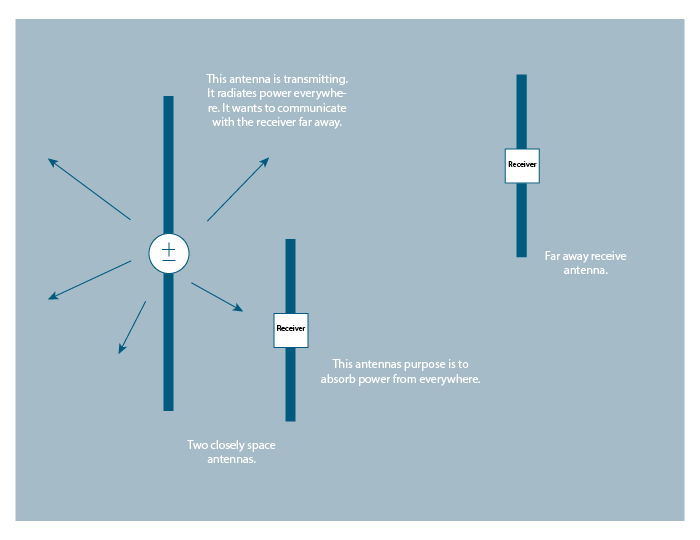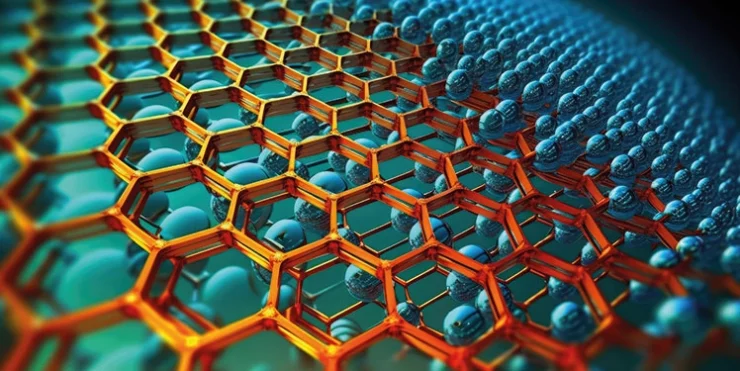Metamaterials are one of the promising technologies where researchers see great potential for the future evolution of next-generation radar and communication systems. Why might that be? The reason is simple: They can be produced and tailored specifically for certain application scenarios.
However, the option of using metamaterials in MIMO antennas in the high-frequency range (between 30 and 100 GHz) has so far received little attention. But it is a technology that will play an important role in the development of future mobile communications standards.
In cooperation with Fraunhofer IZM, Robert Stöcker is working on precisely this topic as part of his doctorate (»On the integration of metasurfaces and antenna arrays from millimeter waves and sub-terahertz wireless«). His aim is to create precise models of the materials to prove their suitability for antenna systems working in the high-frequency range.
Metamaterials offer great potential. Researchers hope that using this technology will open up avenues for new applications in the future, particularly in the field of optics.
Metamaterials are a class of materials with properties that go beyond those found in nature, such as anomalous reflection or refraction. Metamaterials are made from ordinary metals and electrical insulators or dielectrics. When an electromagnetic wave strikes a metamaterial, a predetermined gradient in the material changes the phase and other properties of the wave, bending the wavefront and deflecting the beam as desired.
»Metamaterial« is both an umbrella term and the designation for three-dimensional structures using the materials, while two-dimensional structures are referred to as »metasurfaces«.
However, their properties are also promising for radar technology. With the development of the 6G generation of mobile communications, the need to use higher frequencies for data transmission is increasing. MIMO antennas are an important technology powering this evolution. MIMO stands for »Multiple Input Multiple Output« and refers to a transmission method in which several antennas are used for receiving and transmitting purposes in communication. MIMO technology is already used in various standards, e.g:
- 5G (3.2 GHz to 3.8 GHz)
- LTE (4G)
- WLAN 2408 MHz to 2480 MHz
- WLAN 5150 MHz to 5850 MHz
- (potentially 6G)
With the help of MIMO, two data streams emitted separately by the base station are received simultaneously, which could, in the best-case scenario, double the data rate.
Decoupling antennas: Metamaterials as a solution for mutual coupling in MIMO systems
MIMO opens up numerous possibilities, as existing systems can be used in the design. While the theory assumes that all antennas are decoupled from each other, actual reality is different: »One problem we face with MIMO is ›mutual coupling‹,« explains Robert Stöcker, research associate at Fraunhofer IZM. »The higher the frequency range used, the stronger the parasitic effects become – signal fields scatter or natural resonances occur in the structure. ›Mutual coupling‹ creates an electromagnetic interaction between the antenna elements in an array, as they are physically very close to each other. Signals that should actually be emitted are absorbed by a neighboring antenna. Similarly, signals that could have been picked up by one antenna are instead absorbed by a nearby antenna. This leads to reduced antenna efficiency in both transmitter and receiver modes.«
Mutual coupling also messes with the radiation pattern of the antenna, especially in antenna arrays such as those used in MIMO systems. If the energy received by all antennas in the array is highly correlated, it is not really an antenna array. Instead, the array functions more like a single large antenna, which makes beam steering much less effective.

A nearby receiving antenna interferes with a transmitting antenna and reduces some of the radiated energy. | © Fraunhofer IZM
In order to work in a frequency range such as the one Robert Stöcker is investigating in his dissertation – in which parasitic effects are much more pronounced – solutions are needed to avoid this interference.
»We have already achieved success with metamaterials in low-frequency ranges up to 10 GHz. Decoupling has been improved. In my research, I am now trying to repeat these effects in the high-frequency range and develop models for this.«
Efficient MIMO systems using metamaterials: challenges and solutions in research
Metamaterials can be used to specifically direct or influence the emission behavior of antennas. Different metamaterials exist for a wide range of applications. For antenna systems, fractal and polarizing structures are used most frequently. Fractal structures can achieve broadband and multi-frequency band performance in the areas of shielding, absorption and transmission. Polarizing structures can change the direction, phase, and polarization of a signal. In his research, Robert Stöcker is examining three different metamaterials in more detail: polarizing structures, fractal structures, and electronic bandgap structures.
In order to keep the MIMOs as compact as possible, »metasurfaces« are used for the most part. These two-dimensional structures are easier to integrate into the packaging and are ultimately faster and more cost-efficient to manufacture. Metamaterials can be integrated directly into the substrate (for polarization) or used as an independent component between other elements (e.g. for shielding). Nevertheless, metamaterials also have their challenges. As they are partly made of metals, they also act as emitters. This additional radiation can ultimately change the radiation pattern of the MIMO antenna.
»How to deal with this inherent radiation in the future will also be considered in my research,« Robert Stöcker adds. »Since parasitic effects only increase in higher frequency ranges, it is important to plan for possible solutions during the modeling phase and to later test them in actual setups and trials.«
Pioneering work at Fraunhofer IZM: Metamaterials in MIMO systems
Robert Stöcker’s dissertation is currently the only project that Fraunhofer IZM is involved in that deals with metamaterials in MIMO systems. The models that the researcher is working on will not only be used for the institute’s own projects. They are also intended to show industrial customers how different metamaterials behave and what the hardware could look like in practice. This technology is likely to be of particular interest to telecommunications companies working on the evolution of future mobile communications standards.





Add comment